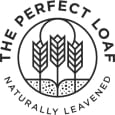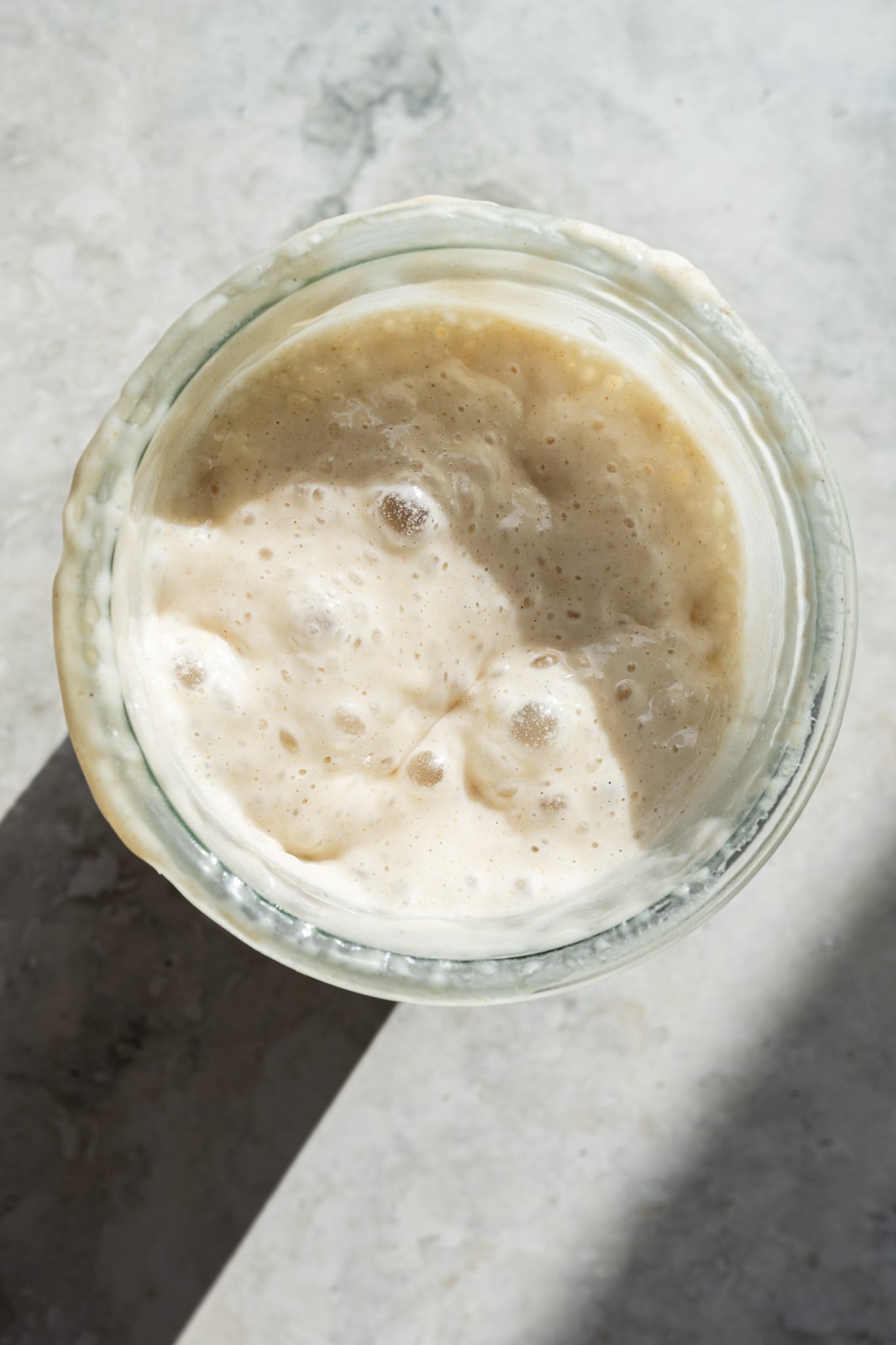Your sourdough starter is the foundation of baking sourdough bread. Through proper maintenance and a little attention, it can last indefinitely and provide you with countless healthy and delicious loaves of bread.
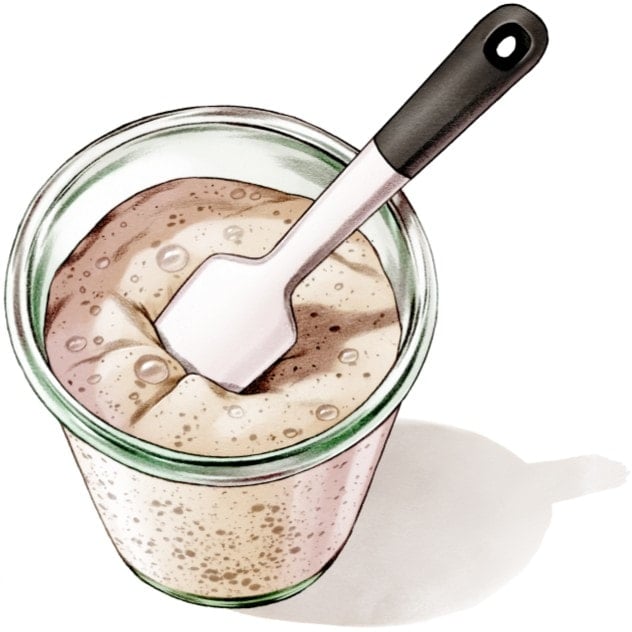
This collection of guides, recipes, and walkthroughs will help you create your sourdough starter from scratch, maintain it with the right flour and feeding ratios, and learn how to use it to make a levain and bake bread. Finally, I’ll also go through a few ways to use your sourdough starter discard to make other food like pancakes, waffles, and more.
What is a Sourdough Starter?
A sourdough starter is a culture containing a stable blend of wild yeasts and suitable lactic acid bacteria. The culture is maintained indefinitely and consistently fed with fresh flour and water (also called refreshing). A sourdough starter is used to seed fermentation in new dough when baking bread and is responsible for leavening (making rise) and flavoring a loaf of sourdough bread.
How to Make a New Sourdough Starter
Creating a new sourdough starter takes only a few days, but to help speed things along, it’s best to try and create the perfect environment for bacteria and yeasts to take hold. Over the years, I’ve found keeping the mixture warm at around 80°F (26°C) and high hydration (100% water to flour in baker’s percentages) helps get things started. In addition, while not mandatory, using certain flour also helps increase the chances a starter will take hold quickly (see below).
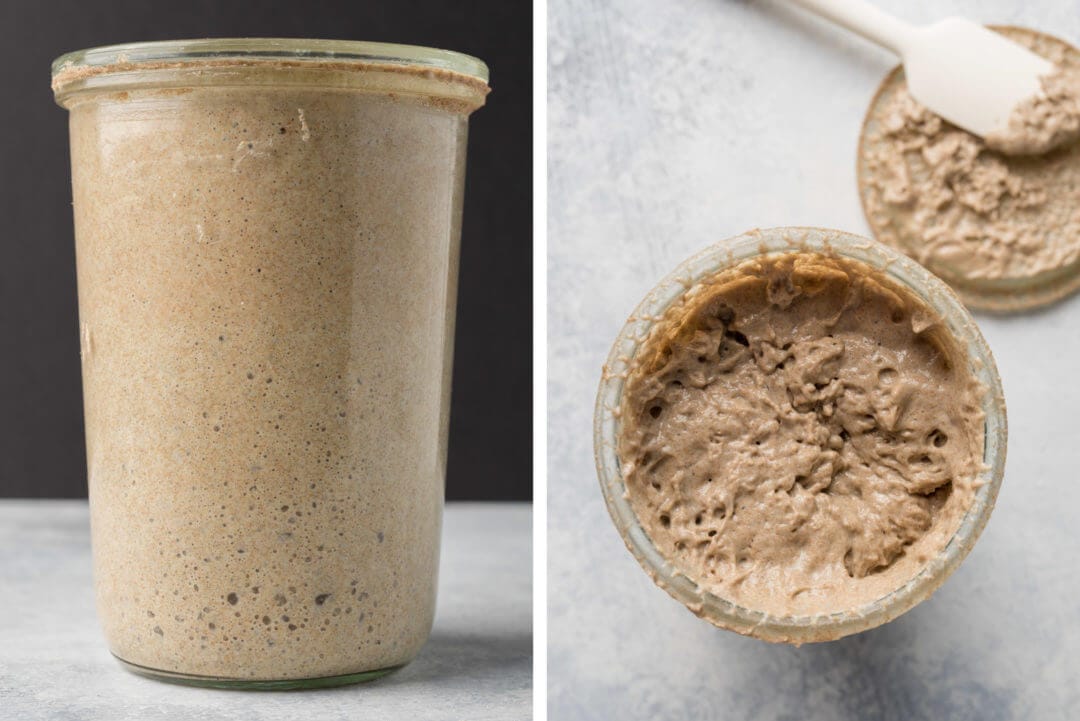
What is the Best Flour to Start a Starter With?
Over the past decade-plus of baking, I’ve tested all manner of flour from whole grain wheat to spelt to einkorn, and while they all do work, my preferred flour to use when creating a sourdough starter is whole grain rye flour and white flour (this can be all-purpose or high-protein bread flour). Using a percentage of whole-grain rye flour helps kickstart the starter creation progress. The additional nutrients in rye flour, combined with keeping the mixture warm and highly hydrated, have increased the reliability of creating a new starter.
What is the Difference Between a Levain and a Sourdough Starter?
A starter goes by a few names (mother, chef, pasta made, etc.). It’s an ongoing culture fed continuously at a set schedule and never used fully when baking. By contrast, a levain (or leaven) is a small offshoot of a sourdough starter used completely when making a loaf of bread by mixing it into a dough that is eventually baked in the oven.
How I Feed My Sourdough Starter
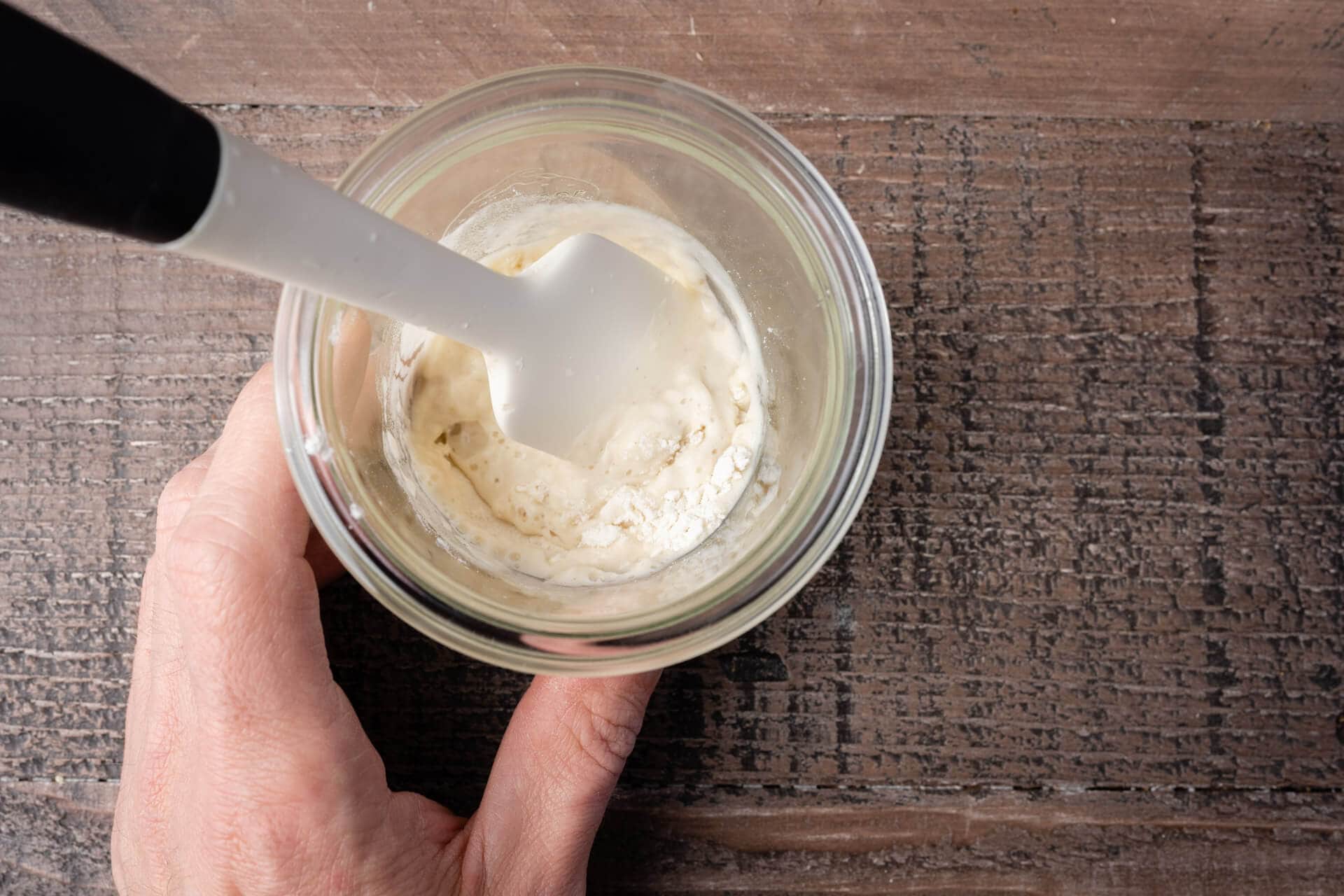
Feeding a sourdough starter calls for discarding some—but not all—of the fermented mixture (the amount leftover is called the carryover), adding fresh flour and water, and leaving it to ferment for some time. The frequency a starter is fed (refreshed) depends on the flour used for the feedings, the amount of ripe starter carryover, and the environmental conditions the starter is kept.
I find the following ratios and flours help keep my starter strong and healthy when I feed it this way twice a day:
| Ingredient | Weight | Baker’s Percentage |
|---|---|---|
| Medium protein white flour (all-purpose flour) | 70g | 70% |
| Whole-grain rye flour | 30g | 30% |
| Water | 100g | 100% |
| Ripe sourdough starter carryover | 20g | 20% |
Twice a day (usually at 9:00 a.m. and 9:00 p.m.), I do the following when my starter is ripe:
- Discard the contents of my starter jar down to 20g (the discard can go in the compost, trash, or used in a discard recipe)
- To the jar, add 70g white flour, 30g whole rye flour, and 100g water
- Stir the mixture until everything is incorporated
- Place the lid to my starter jar on top, loosely (gasses can escape, but nothing can get in)
Check out my guide to how I currently feed my starter for an in-depth look at my flour, water, carryover ratios, and sourdough starter refreshment schedule.
Do I have to feed my sourdough starter twice a day?
I like to feed mine twice daily because it gives me two opportunities to make a levain for baking. If you prefer, you can feed only once daily to reduce the flour used for these feedings. To do so, leave less ripe starter in the jar to lengthen the time between feedings. Keep reducing the amount of ripe starter left until the starter ripens right when you want to feed it consistently daily.
Can I keep a smaller starter? I don’t like discarding so much flour.
Yes, you can maintain a smaller starter to reduce waste. I prefer to keep around 200g of ripe sourdough starter on hand for baking, but you can certainly reduce the quantity of flour, water, and ripe starter to keep a smaller starter.
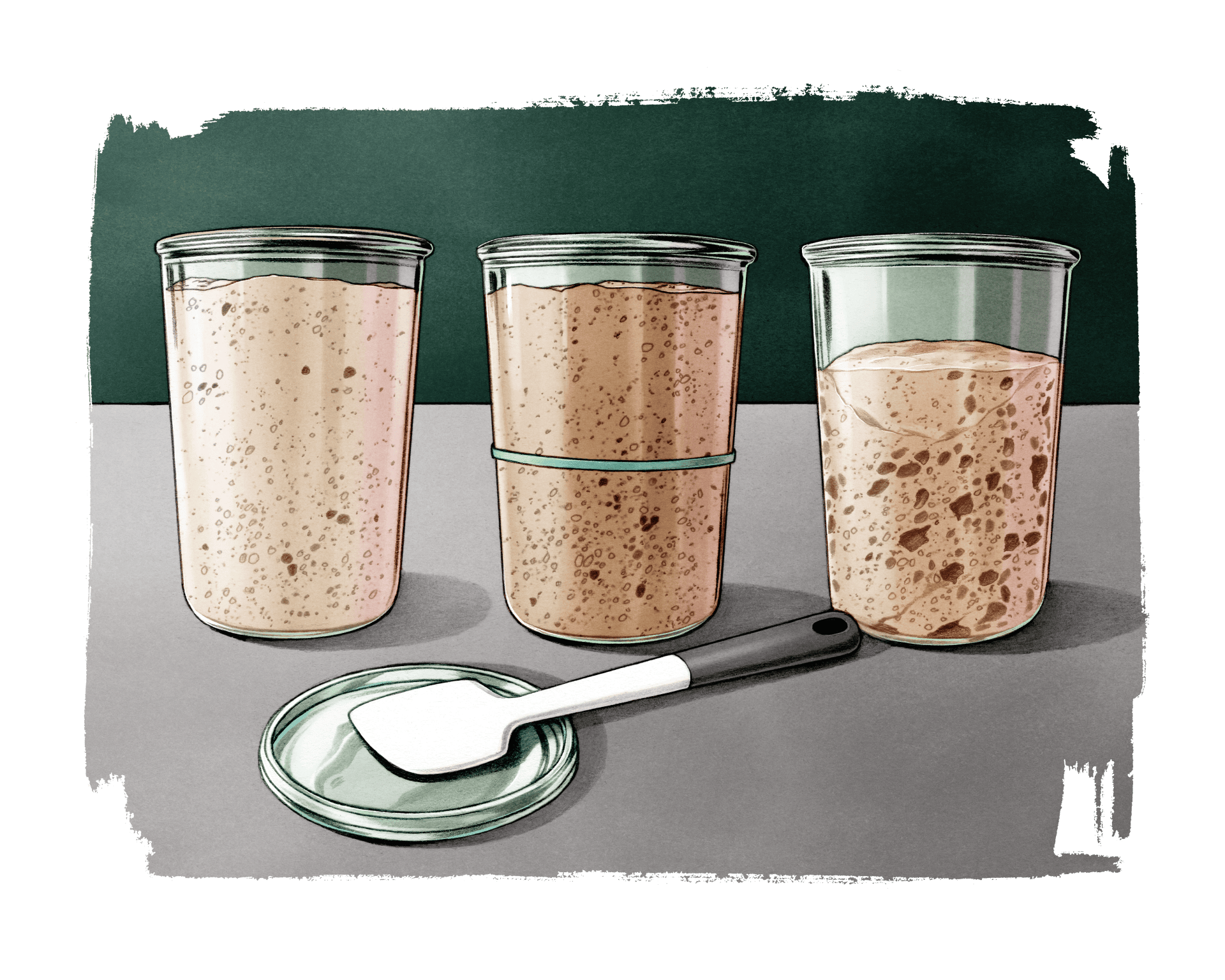
What is the Best Ratio for a Sourdough Starter?
There is no single best ratio, but I’ve found a ratio of 1:5:5 fed twice daily at 12-hour intervals to produce a sourdough starter that’s strong and healthy. This ratio corresponds to 20% ripe starter carryover, 100% water, and 100% flour (a mix of whole grain rye and white flour) at each feeding.
What is the Best Flour to Feed a Starter With?
I prefer to use some percentage of whole-grain flour in each feeding, and I keep a small amount in my favorite starter jar each time I discard it. This lets me stretch my feeding interval to 12 hours, so I refresh twice daily. It’s possible to drop this down to once a day, but I’m not particularly eager to go any less frequently to ensure my starter is strong and healthy.
Do I Have to Discard Every Time I Feed My Starter?
Yes, it’s necessary to discard a little of your sourdough starter each time you feed it; otherwise, your mixture will eventually become very large and overly acidic.
(Read below for ways to save and use this sourdough starter discard!)
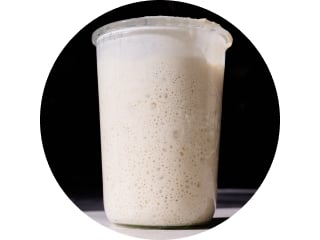
Get Your Free Sourdough Starter (and Levain) Quicksheet
My sourdough starter quicksheet is a free, printable guide that walks you through feeding your starter daily, from what flour and water ratios to use to how to make it more or less acidic. It also discusses how to make a levain (an off-shoot of your starter) for a single bake to change its flavor profile and fermentation characteristics.
Download, print, and keep it in your baking notebook for quick reference!
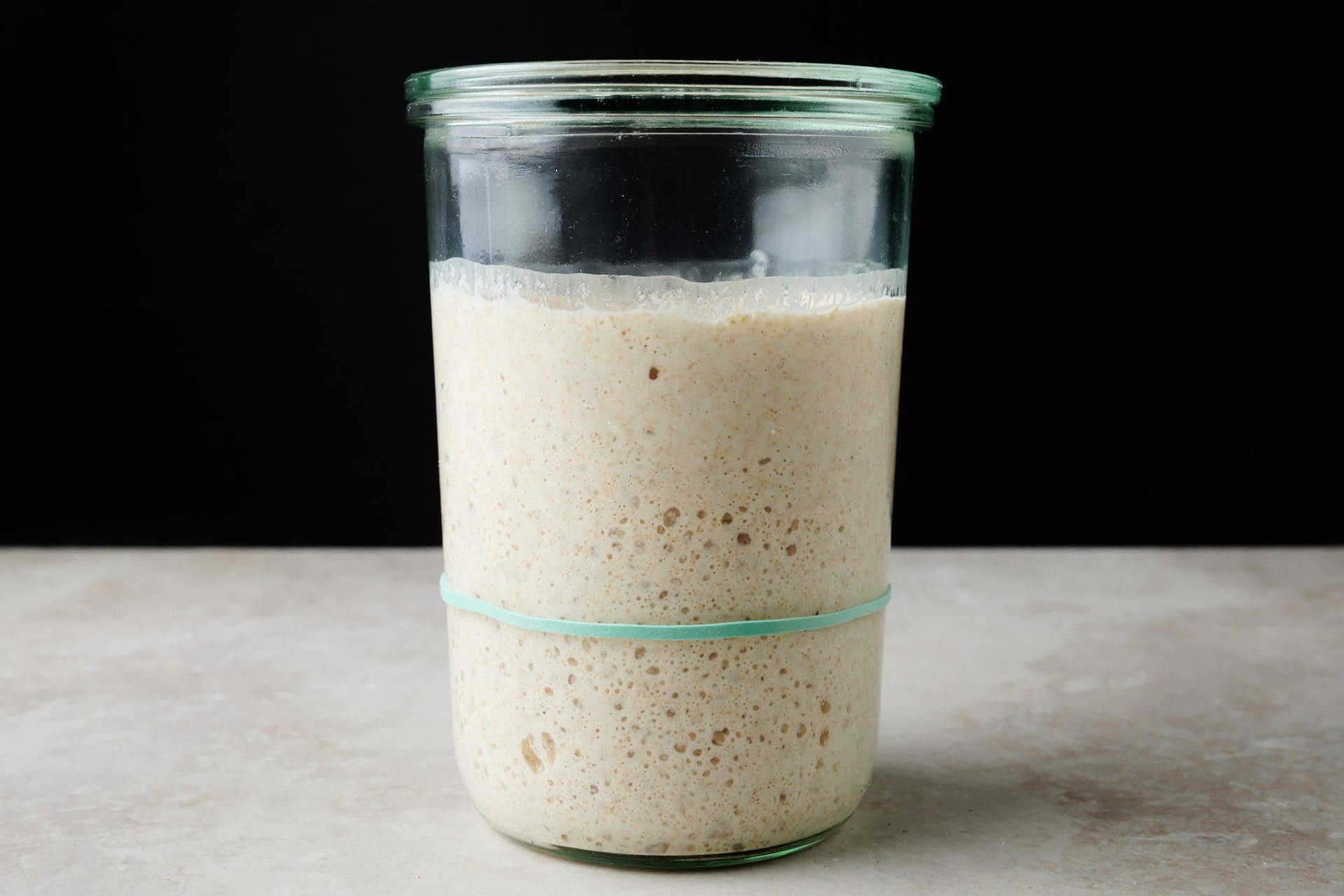
What is a Ripe Sourdough Starter?
A “ripe” starter is fermented for several hours and is ready to use in a recipe, whether to make a levain or mix directly into a dough for sourdough bread. Generally, when a starter is ripe, it has risen, is bubbly on top, has a sour aroma, and has a looser consistency.
Typical signs your starter is ripe and ready to be used:
- Some rise
- Bubbles on top and at the sides
- A sour aroma
- Loosening in consistency
Looking at this in more detail, there are two different types of starters:
- Liquid starter: around 90 to 100% hydration (as much water as there is flour)
- Stiff starter: between 50 to 65% hydration (about half as much water as there is flour)
Signs of ripeness in a liquid starter
In terms of ripeness, you’ll see lots of bubbles and aeration in a liquid starter, and the mixture will be loose. If you gently pull back the top layer or stir it, you’ll feel how the mixture has broken down.
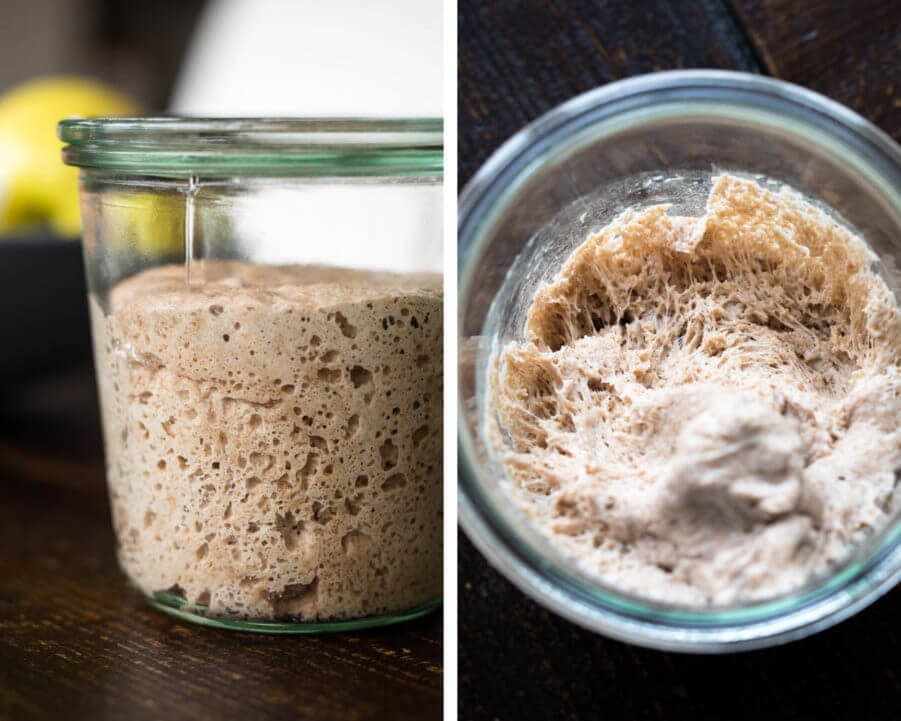
Signs of ripeness in a stiff starter
In terms of ripeness for a stiff starter, the dome at the top begins to collapse and recede. After mixing a stiff starter and forming it into a ball, it’ll relax to fill the jar and start to rise, forming a dome. When mature, the dome will look less like the top of a ball and more like a plateau. Additionally, the top will show a soft and crackled texture. It will look like it’s breaking apart, and if you pull back this top, you’ll detect a pungent, sour aroma, and the entire mixture will have softened.
What Does it Mean for a Sourdough Starter to be “Mature?”
A mature sourdough starter consistently shows the same signs of fermentation each day. Maturity refers to a stable mix of lactic acid bacteria and wild yeasts that coexist in symbiosis, indicating the culture is steady and can leaven and flavor sourdough bread properly.
Some bakers refer to a mature starter as one that’s matured overnight or for some number of hours and is now ready for bread-making. I don’t typically use mature to refer to this time. Rather, I use the word ripe to designate a starter as ripe that day and ready to be mixed into a dough (or for making a levain).
What is the Difference Between a Starter That is Fed and Unfed?
A “fed” sourdough starter is ripe, has fermented for several hours, and is ready to be used in a bread-making recipe. An “unfed” sourdough starter has not been fed in a while and is essentially considered sourdough starter discard. In other words, when using an unfed starter, you use some of its discard created during a regular feeding schedule.
Can I Save Sourdough Starter Discard?
I keep a container in my kitchen fridge that holds sourdough starter discard for up to 2 weeks. This sourdough starter discard cache, as I like to call it, is a great way to avoid throwing starter away and can be used in any of the starter discard recipes below.
Using Sourdough Starter Discard
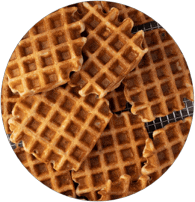
Refreshing (feeding) your sourdough starter daily can lead to excess starter. My favorite thing with excess starter discard is making pancakes, waffles, or banana bread—they’re all delicious and can be made with little notice.
And there are so many more ways to use your sourdough starter discard! If you do a little pre-planning, you can ensure you never waste a single drop of your ripe sourdough starter.
See my collection of sourdough starter discard recipes →
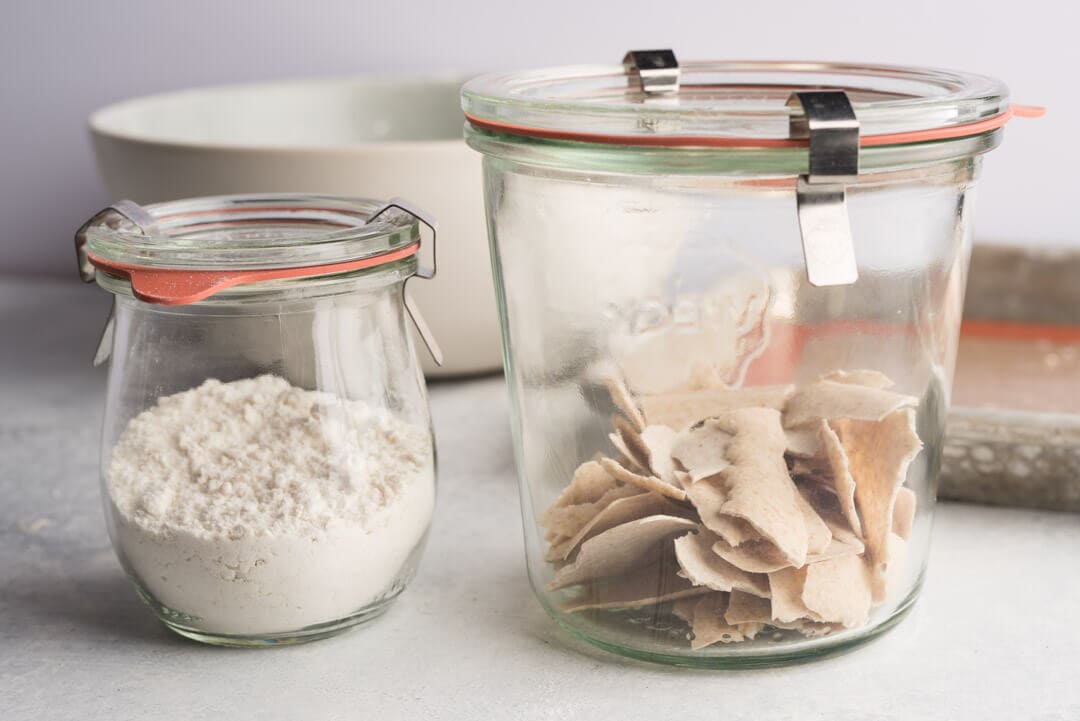
Can I Store My Sourdough Starter and Not Feed It?
Yes, it’s safe and possible to store your sourdough starter if you want to take a break from baking bread. You can store your starter for short periods (up to a week or three) in the refrigerator, or months by drying it out, or even years by completely dehydrating it and saving the dried pieces in a sealed container. Read through my guide to storing your starter for any duration.
What’s the Best Way to Store My Sourdough Starter For Vacation?
If you’re going on a short vacation for up to three weeks, the fridge is the best way to put your sourdough starter in hibernation. Using the fridge this way also means it’ll spring back to full strength rather quickly with just a few feedings at warm room temperature.
Read my guide to storing a sourdough starter in the fridge for vacation for my step-by-step storage and revival tips.
What’s the Best Way to Revive a Sourdough Starter From the Fridge?
Every sourdough starter is different, but for my decade-old starter, the best way to revive it from the fridge is to take it out and let it warm for a few hours on the kitchen counter. Then, give it a feeding with its typical maintenance flour. Let this mixture ferment during the day or overnight, then give it another feeding. Repeat this process, feeding it twice a day for two days. After this time, the starter should be strong and ready for baking.
Related to this, I always think of the fridge as a stressful environment for my starter. To bake the best bread possible, always take it out and give it a few feedings until it shows strong signs of fermentation consistently each day. While I know some bakers who can make sourdough bread using their starter from the fridge, mine has never worked in this way.
Microbes Present in a Sourdough Starter
The exact microbes—lactic acid bacteria and yeasts—present in a given sourdough starter highly depend on how the starter is maintained: the flour used for feedings, the amount of ripe carryover, and the maintenance temperature. Several lactic acid bacteria species, primarily Lactobacillus sp., Leuconostoc sp., and Weissella sp., are most often present, in addition to yeasts, primarily Saccharomyces cerevisiae and Candida sp.
Have a Sourdough Starter Problem?
Check out the top 21 problems—and solutions—bakers face when creating and maintaining their sourdough starter.
Read through my collection of starter problems and solutions →
Sourdough Starter FAQs
What is a sourdough starter called in Italian?
In Italy, a sourdough starter is typically called lievito madre or pasta madre, which means u0022mother dough.u0022 A starter is also sometimes called lievito naturale and pasta acida naturale—all of which refer to a sourdough starter.
Can I switch flour when creating a sourdough starter?
Yes, absolutely. You can create a sourdough starter with any flour in your pantry, though I find it easiest to use a portion of whole-grain rye flour to help speed up the process. During the starter creation process, you can switch from rye to whole wheat to white flour to even einkorn or spelt—any flour suitable for baking bread will work.
What is a 1:1:1 sourdough starter?
This sourdough starter consists of equal parts flour, water, and carryover ripe sourdough starter.
What’s Next?
Now that you have a firm grasp of what a sourdough starter is and how to create one, review my guide to maintaining a starter to keep it strong and healthy.
If you want a lot of this info tidied up and on a single, printable sheet, check out my sourdough starter and levain quicksheet—it has everything you need to know in one handy chart.
